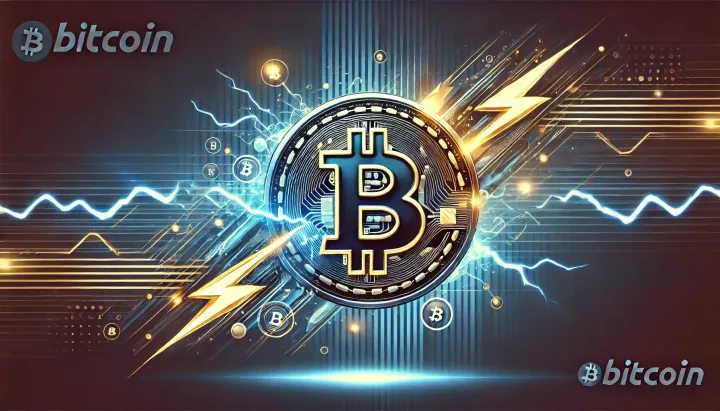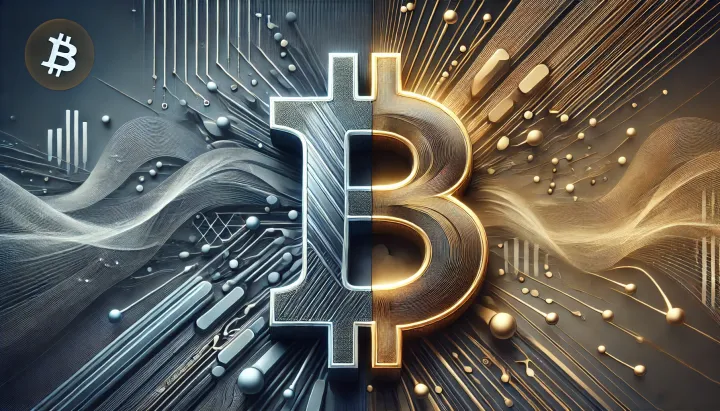The Lightning Network: Unlocking Bitcoin’s Speed, Privacy, and Scalability
In his March 14, 2024 podcast, Andreas Antonopoulos provides an in-depth explanation of the Lightning Network, a Layer 2 solution designed to enhance Bitcoin’s scalability by enabling faster and cheaper transactions.

- My 'briefing notes' summarize the content of podcast episodes; they do not reflect my own views.
- They contain (1) a summary of podcast content, (2) potential information gaps, and (3) some speculative views on wider implications.
- Pay attention to broadcast dates (I often summarize older episodes)
- Some episodes I summarize may be sponsored: don't trust, verify, if the information you are looking for is to be used for decision-making.
Summary
In his March 14, 2024 podcast, Andreas Antonopoulos explores the transformative potential of the Lightning Network, a Layer 2 solution for Bitcoin designed to improve transaction speed, reduce costs, and enhance privacy. Antonopoulos provides detailed insights into how the network functions, addressing its benefits for small-value transactions and its potential for broad adoption, while also highlighting current limitations in liquidity and user experience.
Take-Home Messages
- Speed: The Lightning Network enables Bitcoin transactions to complete in under a second, vastly improving on-chain transaction times.
- Low Fees: With transaction fees dramatically lower than on-chain Bitcoin, the Lightning Network makes microtransactions feasible for digital services.
- Enhanced Privacy: The Lightning Network’s unique routing system offers users improved privacy by obscuring the full transaction path from intermediaries.
- Merchant Adoption: The network is optimal for payments under $25, positioning it as a promising solution for small businesses looking to adopt Bitcoin payments.
- Evolving Technology: While the Lightning Network is still experimental, ongoing improvements in liquidity and user experience will be critical to its future success.
Overview
Andreas Antonopoulos explains the inner workings and broader implications of the Lightning Network, a Layer 2 solution aimed at solving Bitcoin’s scalability challenges. Antonopoulos describes how the network processes payments faster than Bitcoin’s main chain, often completing in under a second. The lower transaction costs on the Lightning Network make it an attractive option for microtransactions, particularly in cases where Bitcoin’s high on-chain fees would make small transactions impractical.
Antonopoulos also highlights the privacy benefits of the Lightning Network. Payments are routed through multiple nodes, with each intermediary only seeing the direct connections before and after it, rather than the full transaction path. This enhances the privacy of transactions, a feature that may become increasingly important as regulatory scrutiny of decentralized financial networks grows.
A significant portion of the discussion focuses on how the Lightning Network enables new business models, especially for microtransactions. By allowing payments as small as a fraction of a penny, it opens up possibilities for services like pay-per-view content and anti-spam measures on websites. However, Antonopoulos notes that the network is better suited for smaller transactions, with larger payments encountering liquidity constraints as they are routed across multiple channels.
Despite its advantages, the Lightning Network is still experimental. Antonopoulos draws comparisons to Bitcoin’s early days, noting that users may experience occasional transaction failures or difficulties in routing payments due to limited channel liquidity. As the network continues to develop, improvements in infrastructure, liquidity management, and user interface design will be necessary for the Lightning Network to realize its full potential.
Stakeholder Perspectives
- Merchants: Interested in the low fees and quick transaction speeds that make the Lightning Network ideal for small payments, but concerned about integration complexity and liquidity challenges for larger transactions.
- Bitcoin Users: Appreciate the privacy and speed of transactions on the Lightning Network, but face frustrations with occasional payment failures and less intuitive user interfaces.
- Regulators: Likely to focus on the privacy aspects of the Lightning Network, which may conflict with current regulations requiring transparent financial reporting.
Implications
The Lightning Network represents a significant step forward for Bitcoin, particularly in terms of scalability, transaction speed, and cost efficiency. Its ability to process microtransactions at low fees makes it a strong candidate for broad adoption in everyday commerce. However, limitations such as liquidity constraints and the experimental nature of its infrastructure present challenges for widespread adoption.
For businesses, the Lightning Network offers a new way to engage in low-cost, private transactions, particularly for microservices and pay-per-use business models. Meanwhile, the network’s enhanced privacy features may invite closer regulatory scrutiny, posing a challenge for maintaining compliance with financial reporting and anti-money laundering requirements. As it evolves, the Lightning Network will require further development to overcome these hurdles and achieve mass adoption.
Future Outlook
The Lightning Network’s future hinges on resolving key challenges around liquidity, user experience, and regulatory acceptance. Improvements in liquidity will enable the network to handle larger transactions, making it more versatile for different types of payments. As developers continue to refine wallet interfaces and infrastructure, the network will become more user-friendly, paving the way for broader adoption among businesses and consumers alike.
Regulatory scrutiny will likely intensify as the Lightning Network grows, particularly around its privacy features. While this may present challenges for compliance, it also represents an opportunity for regulatory frameworks to adapt to emerging decentralized technologies. The successful balance between privacy and compliance will be crucial to ensuring that the Lightning Network can fulfill its potential as a transformative payment system for Bitcoin.
Information Gaps
- How can the Lightning Network further scale to handle the growing volume of Bitcoin transactions in the long term? Scaling is critical for the Lightning Network to fulfill its potential. Further research is needed to identify and overcome the technical limitations that may hinder its ability to handle increasing demand for faster and cheaper Bitcoin transactions.
- How does the Lightning Network’s privacy compare to traditional Bitcoin transactions in terms of transaction traceability? With privacy being a key feature of the Lightning Network, it is important to understand how it compares with Bitcoin's main chain in terms of traceability, especially in light of potential regulatory scrutiny.
- What technical innovations can resolve liquidity issues for large payments on the Lightning Network? The ability to efficiently route large payments is a known issue on the Lightning Network. Research into how liquidity can be better distributed across channels would improve the network’s capacity to handle high-value transactions.
- What design improvements are necessary for Lightning wallets to offer a more seamless user experience, particularly for non-technical users? User experience is a barrier to wider adoption. Understanding what improvements in wallet design can make the Lightning Network more accessible to non-technical users is critical for its mass adoption.
- How might regulatory frameworks adapt to accommodate the privacy and decentralized nature of the Lightning Network? As decentralized financial systems grow, regulatory frameworks will need to evolve. Investigating how current financial regulations can adapt to the privacy features of the Lightning Network is essential for its long-term success.
Broader Implications
Bitcoin and Global Payment Systems
The Lightning Network's ability to process transactions in under a second positions Bitcoin as a serious competitor to traditional payment systems like Visa and Mastercard. With significantly lower fees, especially for micropayments, Bitcoin could begin to disrupt industries reliant on fast, low-cost transactions.
Privacy and Decentralized Finance (DeFi)
Enhanced privacy on the Lightning Network could have far-reaching implications for the DeFi sector, where privacy concerns remain a major barrier to adoption. By allowing users to transact without intermediaries seeing the full transaction path, the Lightning Network could become a key privacy-preserving technology in decentralized financial ecosystems. Yet, this also brings challenges in balancing privacy with regulatory requirements like KYC and AML.
Bitcoin’s Role in Microeconomies
The Lightning Network opens up new opportunities for microeconomies by enabling microtransactions with minimal fees. This can foster growth in developing regions where small transactions are common but traditional banking services are limited or expensive. As more regions adopt Bitcoin and the Lightning Network, it could reshape how people access financial services, leading to greater financial inclusion globally.
Merchant Adoption and E-Commerce
For merchants, the Lightning Network offers a clear path to integrating Bitcoin into e-commerce, particularly for low-value transactions. Its low fees and fast settlement times make it ideal for digital services, content subscriptions, and pay-per-use business models.
Technological Evolution in Bitcoin
The Lightning Network represents just one layer of technological innovation on Bitcoin’s protocol, but it sets the stage for further developments in Layer 2 and beyond. Future enhancements, such as smart contracts and greater interoperability between networks, could further enhance Bitcoin’s use case for both large-scale and everyday transactions. Continued innovation will ensure that Bitcoin remains at the forefront of decentralized finance.



Comments ()